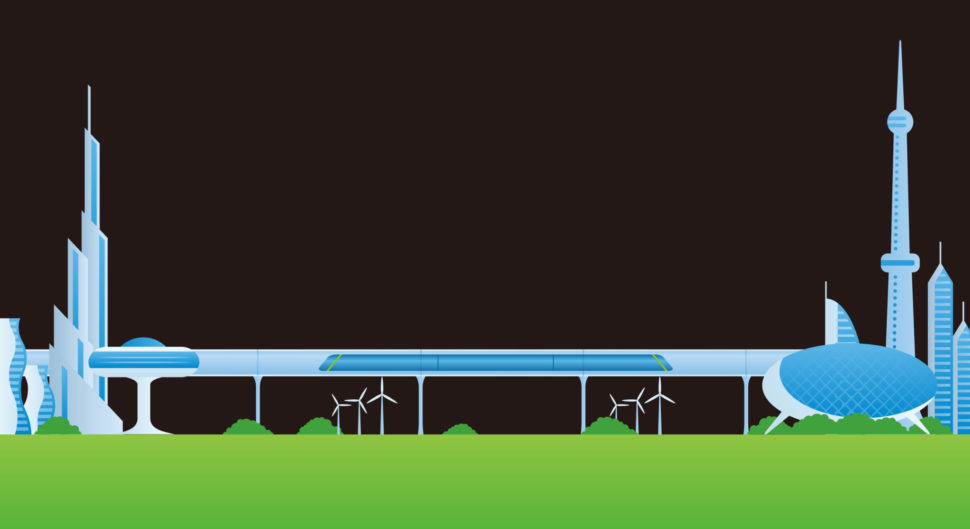Since Elon Musk first proposed Hyperloop, the concept has grown and flourished. Nowadays there are many companies competing to fulfill this dream of airplane-speed travel on (or even under) the ground.
Back in October 2017, Maryland Governor Larry Hogan announced issuing Musk’s The Boring Company (plans here) a conditional utility permit to start the Hyperloop tunnel project. This is a culmination of years of design, development, and testing–not to mention a periodic prodding on Musk’s part.
The permit will allow The Boring Company to dig a 10.3-mile tunnel beneath the Baltimore-Washington Parkway, between the Baltimore city line and state Highway 175 in Hanover. As you see below, Musk predicts that the route will allow a 29-minute NYC-DC trip.
In 2013, Elon Musk first proposed Hyperloop as an alternative to the expensive $68 billion California High-Speed Rail Project. In that first proposal, Musk outlined how Hyperloop technology could employ magnetically-suspended pods traveling in a near-vacuum environment and at nearly the speed of sound.
One of the initial selling points of the Hyperloop train, Musk boasted that the current 7-hour or more trip from Los Angeles to San Francisco could take a mere 30 minutes.
This journey began after Musk tweeted a complaint about LA traffic.
These days, however, there are multiple firms competing to build the first workable Hyperloop route. In particular, two California-based startups, Hyperloop Transportation Technologies and Virgin Hyperloop One, are hard at work.
“It’s happening far faster than I would have ever expected, and it’s happening all over the world,” Dr. David Goldsmith, a researcher at Virginia Tech told NBC news.
Of course, practical Hyperloop applications will take years of testing and regulatory challenges to come to fruition, but developers hope to be able to deliver pods that can carry up to 40 passengers at speeds near 800 mph.
Virgin Hyperloop One Progress
Late last month, Virgin Hyperloop One announced the unveiling of the initial design for a Dubai Hyperloop pod. This pod is a full-scale replica of the eventual pod that allows anyone to experience what the pod will look and feel like as a traveler.
“The hyperloop is part of RTA’s initiatives for Dubai Future Accelerators,” said HE Mattar Al Tayer, Director-General, and Chairman of the Board of Executive Directors of Dubai’s Roads and Transport Authority (RTA).

“The UAE and RTA were early supporters of our hyperloop technology, so it is particularly exciting to be unveiling the Dubai hyperloop pod with the RTA as part of UAE Innovation Month. Our focus in 2018 would be continuing the close collaboration with RTA to progress to the next phase of the project,” said CEO of Virgin Hyperloop One Rob Lloyd.
Virgin Hyperloop One’s next phase, Phase 2, will consist of partnering with the Dubai government and RTA to evaluate and develop a wider UAE hyperloop network.
Hyperloop Transportation Technologies Progress
Also late last month, Hyperloop Transportation Technologies and the Northeast Ohio Areawide Coordinating Agency (NOACA) signed an official public-private partnership agreement. The measure received bipartisan support and reveals a consortium to conduct a $1.2 million feasibility study in the Great Lakes region.
https://youtu.be/pBvJwgrbOe0
HTT plans to build capsules that can hold 28-40 passengers and a train system that can shuttle over 160,000 passengers a day. Their magnetic levitation technology is projected to conduct their Hyperloop pod at speeds over 1,200 km/h.
HTT has also filed for construction permits in California and has received approval to begin planning projects in Slovakia, the Republic of Korea, and India.
While regulatory frameworks will take a while to come together, HTT did receive approval to insure Hyperloop from the world’s largest reinsurer, Munich Re.



















Comments (0)
Least Recent